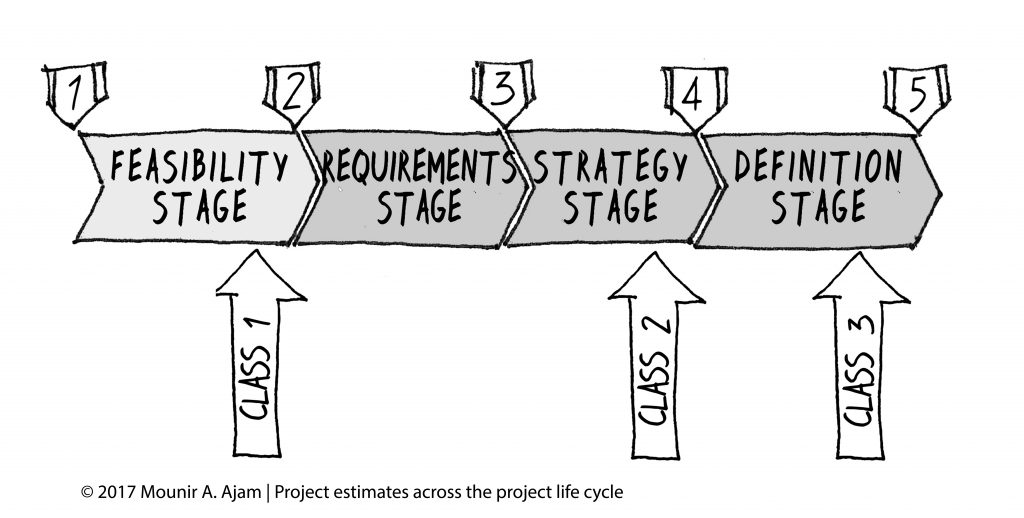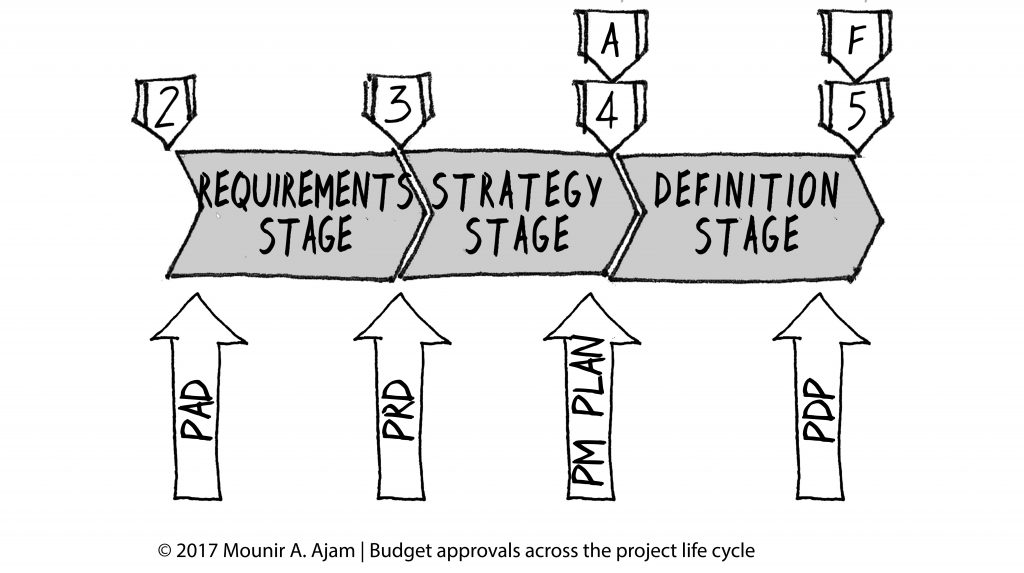As you read this article you replace over budget with behind schedule and overrun with delayed to shift the discussion from cost to schedule and reach the same conclusion.
In recent days I have posted on Social Media about delayed mega projects and even did a video on the subject but in Arabic.
Yesterday, I posted a message saying “Keeping things in perspective 1% overrun on a $1 billion project is $10 million. 10% is $100 million” and a response came from someone that I highly respect “But acceptable range of error should be 5%”
A response came from someone that I highly respect “But acceptable range of error should be 5%”.
He is absolutely right but since I am usually careful with my words, notice I used the term overrun in my original post. I did not explain the term in my 140-character limited tweet 🙂 and here is my chance. However, first, we have to explain some other terms.
Estimate
In organizations with mature project management practice, a detailed estimate would be developed after defining the requirements and the detailed scope, schedule, quality and all other functions. This estimate will be for cost and time and used in the submittal for final approval. In the image below, the Class 3 Estimate represents this detailed estimate and the symbol on the right with the number 5, represents the final approval.
In the image below, the Class 3 Estimate represents this detailed estimate and the symbol on the right with the number 5, represents the final approval.

It is important to clarify that by detailed estimate, we mean detailed enough to allow the final approval. However, this is only an estimate–an approximation–of the final cost. This estimate should have an accuracy level of +/-5%; +/-10%; or -5% to +10%. The actual range depends on the organizational financial control system and policy.
Budget
Budget or schedule – same idea
The word budget refers to the principle that we have an approved budget. Therefore, at Stage Gate 5, when management approves the project, then the Class 3 Estimate will lead to an approved budget = Budget. Please note, this approval is typically known as the final approval, which is represented via the “F” symbol on top of the “5”.
 Once again, in PM mature organizations, they understand that this amount is only an approximation of the final cost. Unless there is unusual circumstances management understand that the approved project has a budget – say 1000 million US$ (1 billion), but in their financial model, they actually have a range. Let us say this organization policy allow +/-10% then the financial model (used for ROI and other calculations) will be based on $900 to 1100 million (0.9 to 1.1 billion US).
Once again, in PM mature organizations, they understand that this amount is only an approximation of the final cost. Unless there is unusual circumstances management understand that the approved project has a budget – say 1000 million US$ (1 billion), but in their financial model, they actually have a range. Let us say this organization policy allow +/-10% then the financial model (used for ROI and other calculations) will be based on $900 to 1100 million (0.9 to 1.1 billion US).
Does this mean all projects must be complete within this range?
No – there is always a chance of something completing below 90% or more than 110% (due to unusual circumstances). However, if this organization has a good organizational project management system (mature practices) then they expect that 90 or 95% of their project should be complete within this range. Incorporating the science of statistics – 50% of the project could be below the $1B budget and 50% of the projects over that amount.
Over/Under Budget
Based on the above, any project that is completed between 90% and 100% of budget we call it the project is under budget and any project completed between 100% and 110% we can it over budget. Further, in these organizations, we might also say that these projects are completed within the budget parameters; within the estimating tolerance. This is normal and mature and proper and real project management.
Over/Under Run
Continuing with the discussion based on the above, any project that is completed below 90% we call it the project is underrun. Any project completed above 110% we can it overrun. Further, these projects are completed outside the budget parameters. Therefore, the organization would require a serious investigation to determine and document the reasons for the underrun or overrun.
Conclusion
One of the most serious damaging statements that we hear from executives (those who do not understand the concepts explained here) would be “You must complete the project on or below budget”; or “it is necessary to complete on or ahead of schedule”.
Why is this a damaging statement?
Because it is likely to cause the project to cost more than it should have or take longer than necessary.
Why?
Survival instinct.
I will leave you guessing for now or reading between the lines. We will explain the last statement in another article.
